Hongyu Wu
Nested AutoRegressive Models
Oct 27, 2025Abstract:AutoRegressive (AR) models have demonstrated competitive performance in image generation, achieving results comparable to those of diffusion models. However, their token-by-token image generation mechanism remains computationally intensive and existing solutions such as VAR often lead to limited sample diversity. In this work, we propose a Nested AutoRegressive~(NestAR) model, which proposes nested AutoRegressive architectures in generating images. NestAR designs multi-scale modules in a hierarchical order. These different scaled modules are constructed in an AR architecture, where one larger-scale module is conditioned on outputs from its previous smaller-scale module. Within each module, NestAR uses another AR structure to generate ``patches'' of tokens. The proposed nested AR architecture reduces the overall complexity from $\mathcal{O}(n)$ to $\mathcal{O}(\log n)$ in generating $n$ image tokens, as well as increases image diversities. NestAR further incorporates flow matching loss to use continuous tokens, and develops objectives to coordinate these multi-scale modules in model training. NestAR achieves competitive image generation performance while significantly lowering computational cost.
Segment Any 3D-Part in a Scene from a Sentence
Jun 24, 2025Abstract:This paper aims to achieve the segmentation of any 3D part in a scene based on natural language descriptions, extending beyond traditional object-level 3D scene understanding and addressing both data and methodological challenges. Due to the expensive acquisition and annotation burden, existing datasets and methods are predominantly limited to object-level comprehension. To overcome the limitations of data and annotation availability, we introduce the 3D-PU dataset, the first large-scale 3D dataset with dense part annotations, created through an innovative and cost-effective method for constructing synthetic 3D scenes with fine-grained part-level annotations, paving the way for advanced 3D-part scene understanding. On the methodological side, we propose OpenPart3D, a 3D-input-only framework to effectively tackle the challenges of part-level segmentation. Extensive experiments demonstrate the superiority of our approach in open-vocabulary 3D scene understanding tasks at the part level, with strong generalization capabilities across various 3D scene datasets.
3D Dental Model Segmentation with Geometrical Boundary Preserving
Mar 31, 2025Abstract:3D intraoral scan mesh is widely used in digital dentistry diagnosis, segmenting 3D intraoral scan mesh is a critical preliminary task. Numerous approaches have been devised for precise tooth segmentation. Currently, the deep learning-based methods are capable of the high accuracy segmentation of crown. However, the segmentation accuracy at the junction between the crown and the gum is still below average. Existing down-sampling methods are unable to effectively preserve the geometric details at the junction. To address these problems, we propose CrossTooth, a boundary-preserving segmentation method that combines 3D mesh selective downsampling to retain more vertices at the tooth-gingiva area, along with cross-modal discriminative boundary features extracted from multi-view rendered images, enhancing the geometric representation of the segmentation network. Using a point network as a backbone and incorporating image complementary features, CrossTooth significantly improves segmentation accuracy, as demonstrated by experiments on a public intraoral scan dataset.
TraFlow: Trajectory Distillation on Pre-Trained Rectified Flow
Feb 24, 2025Abstract:Majorities of distillation methods on pre-trained diffusion models or on pre-trained rectified flow, focus on either the distillation outputs or the trajectories between random noises and clean images to speed up sample generations from pre-trained models. In those trajectory-based distillation methods, consistency distillation requires the self-consistent trajectory projection to regulate the trajectory, which might avoid the common ODE approximation error {while still be concerning about sampling efficiencies}. At the same time, rectified flow distillations enforce straight trajectory for fast sampling, although an ODE solver is still required. In this work, we propose a trajectory distillation method, \modelname, that enjoys the benefits of both and enables few-step generations. TraFlow adopts the settings of consistency trajectory models, and further enforces the properties of self-consistency and straightness throughout the entire trajectory. These two properties are pursued by reaching a balance with following three targets: (1) reconstruct the output from pre-trained models; (2) learn the amount of changes by pre-trained models; (3) satisfy the self-consistency over its trajectory. Extensive experimental results have shown the effectiveness of our proposed method.
A Survey on Pre-Trained Diffusion Model Distillations
Feb 12, 2025Abstract:Diffusion Models~(DMs) have emerged as the dominant approach in Generative Artificial Intelligence (GenAI), owing to their remarkable performance in tasks such as text-to-image synthesis. However, practical DMs, such as stable diffusion, are typically trained on massive datasets and thus usually require large storage. At the same time, many steps may be required, i.e., recursively evaluating the trained neural network, to generate a high-quality image, which results in significant computational costs during sample generation. As a result, distillation methods on pre-trained DM have become widely adopted practices to develop smaller, more efficient models capable of rapid, few-step generation in low-resource environment. When these distillation methods are developed from different perspectives, there is an urgent need for a systematic survey, particularly from a methodological perspective. In this survey, we review distillation methods through three aspects: output loss distillation, trajectory distillation and adversarial distillation. We also discuss current challenges and outline future research directions in the conclusion.
Parametric Primitive Analysis of CAD Sketches with Vision Transformer
Jun 29, 2024



Abstract:The design and analysis of Computer-Aided Design (CAD) sketches play a crucial role in industrial product design, primarily involving CAD primitives and their inter-primitive constraints. To address challenges related to error accumulation in autoregressive models and the complexities associated with self-supervised model design for this task, we propose a two-stage network framework. This framework consists of a primitive network and a constraint network, transforming the sketch analysis task into a set prediction problem to enhance the effective handling of primitives and constraints. By decoupling target types from parameters, the model gains increased flexibility and optimization while reducing complexity. Additionally, the constraint network incorporates a pointer module to explicitly indicate the relationship between constraint parameters and primitive indices, enhancing interpretability and performance. Qualitative and quantitative analyses on two publicly available datasets demonstrate the superiority of this method.
FaceCom: Towards High-fidelity 3D Facial Shape Completion via Optimization and Inpainting Guidance
Jun 04, 2024Abstract:We propose FaceCom, a method for 3D facial shape completion, which delivers high-fidelity results for incomplete facial inputs of arbitrary forms. Unlike end-to-end shape completion methods based on point clouds or voxels, our approach relies on a mesh-based generative network that is easy to optimize, enabling it to handle shape completion for irregular facial scans. We first train a shape generator on a mixed 3D facial dataset containing 2405 identities. Based on the incomplete facial input, we fit complete faces using an optimization approach under image inpainting guidance. The completion results are refined through a post-processing step. FaceCom demonstrates the ability to effectively and naturally complete facial scan data with varying missing regions and degrees of missing areas. Our method can be used in medical prosthetic fabrication and the registration of deficient scanning data. Our experimental results demonstrate that FaceCom achieves exceptional performance in fitting and shape completion tasks. The code is available at https://github.com/dragonylee/FaceCom.git.
A Data-Driven Machine Learning Approach for Consumer Modeling with Load Disaggregation
Nov 04, 2020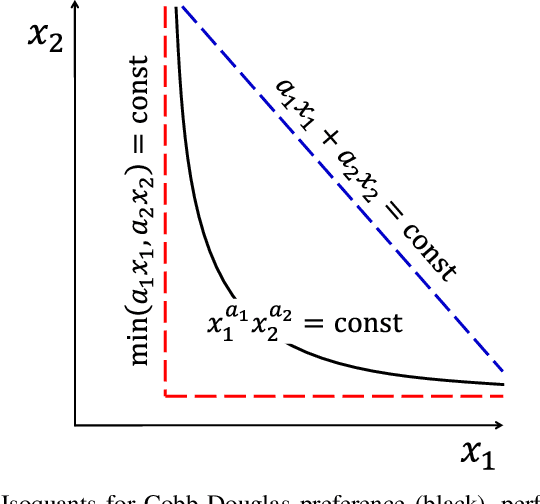
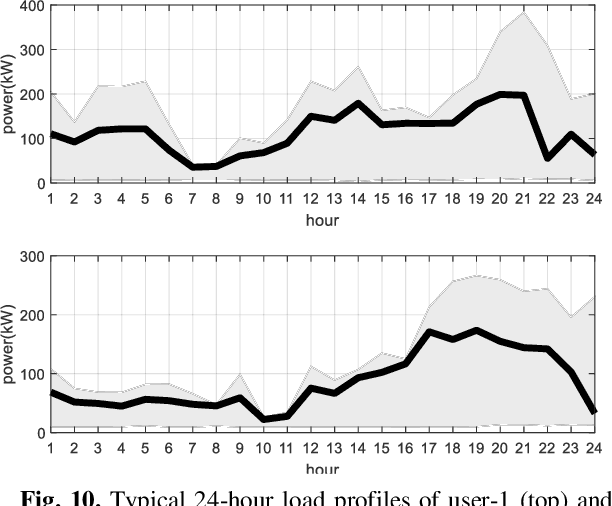
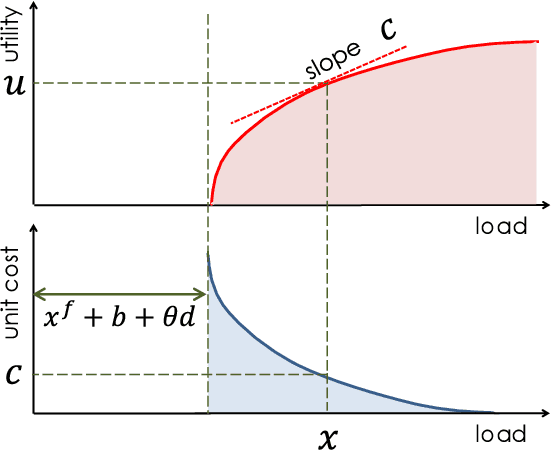
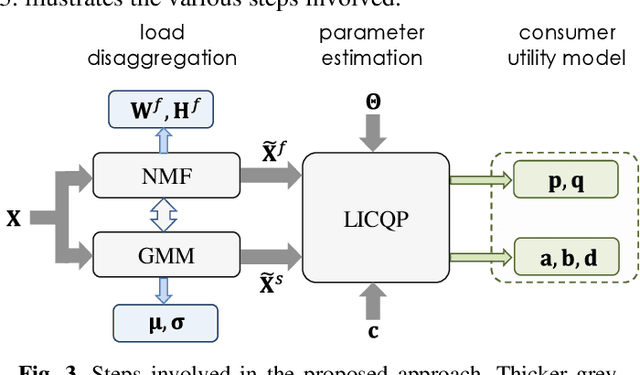
Abstract:While non-parametric models, such as neural networks, are sufficient in the load forecasting, separate estimates of fixed and shiftable loads are beneficial to a wide range of applications such as distribution system operational planning, load scheduling, energy trading, and utility demand response programs. A semi-parametric estimation model is usually required, where cost sensitivities of demands must be known. Existing research work consistently uses somewhat arbitrary parameters that seem to work best. In this paper, we propose a generic class of data-driven semiparametric models derived from consumption data of residential consumers. A two-stage machine learning approach is developed. In the first stage, disaggregation of the load into fixed and shiftable components is accomplished by means of a hybrid algorithm consisting of non-negative matrix factorization (NMF) and Gaussian mixture models (GMM), with the latter trained by an expectation-maximization (EM) algorithm. The fixed and shiftable loads are subject to analytic treatment with economic considerations. In the second stage, the model parameters are estimated using an L2-norm, epsilon-insensitive regression approach. Actual energy usage data of two residential customers show the validity of the proposed method.
Robust Matrix Completion State Estimation in Distribution Systems
Mar 12, 2019


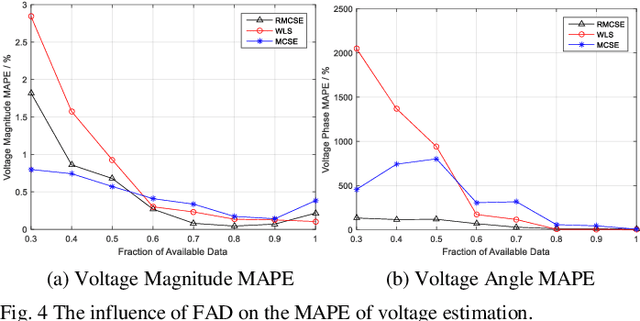
Abstract:Due to the insufficient measurements in the distribution system state estimation (DSSE), full observability and redundant measurements are difficult to achieve without using the pseudo measurements. The matrix completion state estimation (MCSE) combines the matrix completion and power system model to estimate voltage by exploring the low-rank characteristics of the matrix. This paper proposes a robust matrix completion state estimation (RMCSE) to estimate the voltage in a distribution system under a low-observability condition. Tradition state estimation weighted least squares (WLS) method requires full observability to calculate the states and needs redundant measurements to proceed a bad data detection. The proposed method improves the robustness of the MCSE to bad data by minimizing the rank of the matrix and measurements residual with different weights. It can estimate the system state in a low-observability system and has robust estimates without the bad data detection process in the face of multiple bad data. The method is numerically evaluated on the IEEE 33-node radial distribution system. The estimation performance and robustness of RMCSE are compared with the WLS with the largest normalized residual bad data identification (WLS-LNR), and the MCSE.
 Add to Chrome
Add to Chrome Add to Firefox
Add to Firefox Add to Edge
Add to Edge